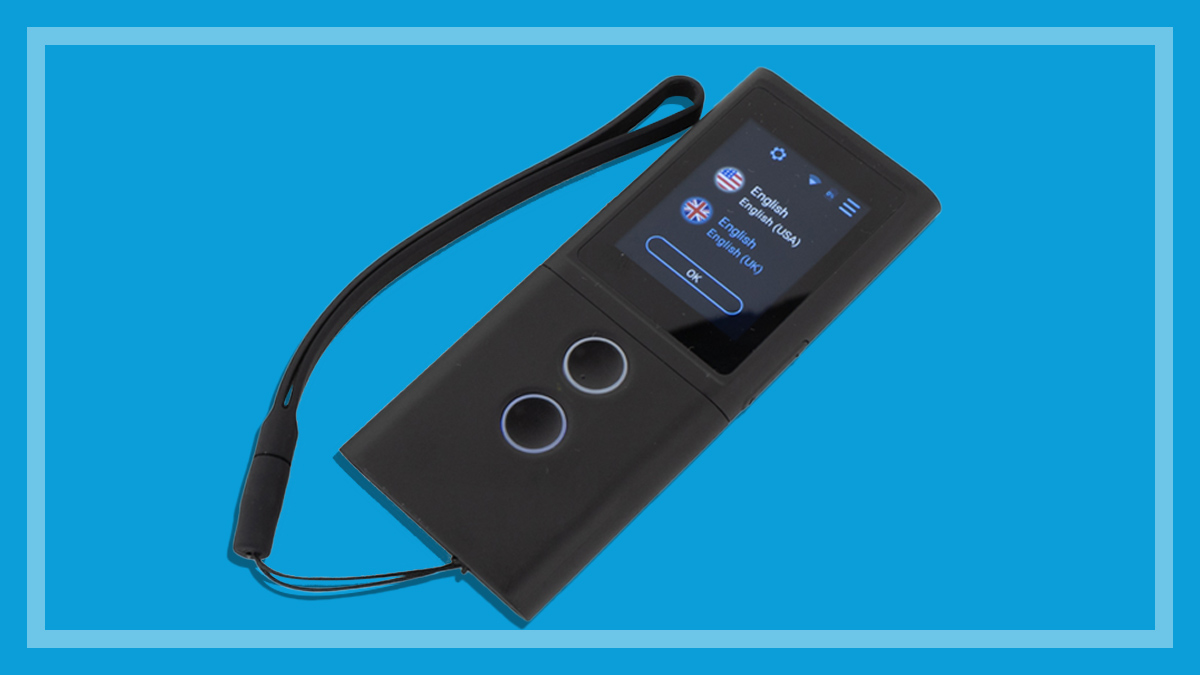Get our independent lab tests, expert reviews and honest advice.
How to use your phone to learn a language

Need to know
- It's possible to learn the basics of a language for free
- Even apps charging a $10–30 monthly fee can be cheaper than other language learning options
- Online learning has its limitations, but millions of people have found language learning apps helpful
On this page:
- How phone-based language learning works
- Duolingo
- Memrise
- Babbel
- Lingvist
- Lingopie
- Specialist language apps
For anyone over 40, learning a language is likely to bring back traumatic memories of attempting to conjugate verbs in a classroom. Or perhaps spending countless hours listening to crackly cassettes and poring over optimistically titled tomes such as Speak Swedish in 30 Days.
Mastering a foreign language still remains a major undertaking, but thanks to technological advances, learning another language as an adult is now cheaper and easier.
The rise of the machine translators
The “Big Bang” of language translation technology was the launch of Google Translate in 2006. That tech has evolved over the years and currently relies on a “neural machine translation engine” to generate reasonably accurate translations.
But the “machine translators” now in wide use – Google Translate and its competitors such as Microsoft Translator, as well as portable translation devices – are far from infallible.
It’s a similar story with language learning apps. They can be a boon for beginners and those with some proficiency who want to discover or be reacquainted with the building blocks of a language. But if you aspire to become fluent in a language and understand its nuances, you’ll usually have to converse at length with native speakers.
Hello Talk, a free app with a paid premium version available, can match you up with someone who wants to practise their English while you, in turn, attempt to speak their native tongue.
How phone-based language learning works
The idea with language learning apps is to put in a small amount of effort every day, or almost every day, and slowly but steadily improve. The apps provide exercises that typically take 5–15 minutes to complete. It’s up to you how many exercises you undertake in any one sitting, but it seems most people don’t spend more than 20 minutes a day using these apps.
Getting by in a language is possible if you can memorise approximately 800–1000 of its most commonly used words
All the apps we tried were simple to use. Once you’ve downloaded and installed an app, you’ll usually be asked to rate your level of fluency or invited to do a brief test to determine your proficiency. Then you’ll be guided to the appropriate exercises.
Most apps offer a free trial but often require setting up an account and providing payment details upfront (you just need to remember to cancel your subscription quickly if you’re not impressed with what’s on offer). Each app usually has a unique selling point, so you’re likely to find some are a better fit for your learning style than others.
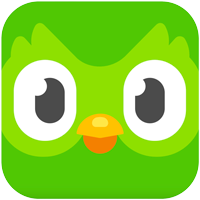
Duolingo
- Available: Android, iOS.
- Price: Free, with a premium version available.
- Point of difference: All the standard exercises, none of the cost.
Duolingo advertises itself as “the world’s best way to learn a language”. That’s debatable, but with over 500 million registered users, it’s undoubtedly the most popular. The app is owned by an American educational technology company and offers courses in 43 languages.
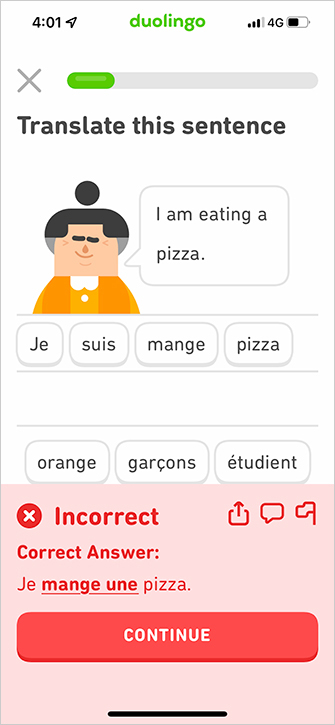
Like most language apps, Duolingo has a freemium model, meaning there’s a free version and a paid premium version that offers extra features, an ad-free experience, or both. But unlike most of its competitors, Duolingo gives away almost everything for free and makes most of its money from advertising.
Super Duolingo, which starts at $10.83 a month, offers an ad-free experience and a few extra features. But most users won’t need the upgrade and it’s not required to access good stuff.
Duolingo has gamified language learning. A friendly cartoon owl guides you through exercises and when you get questions right, cartoon characters do a jig and say things like “Good job!”.
Users are encouraged to unlock levels, win gems and hearts (hearts can be used to purchase special in-app features and items), and not break a streak of daily studying. This can make you feel like you’re using an app aimed at a 10-year-old, but the constant positive feedback can also be encouraging.
Duolingo attracts criticism for not offering much to intermediate and advanced learners, but if you just want to learn the basics and don’t want to incur any expense doing so, you’ve got nothing to lose by giving it a go.
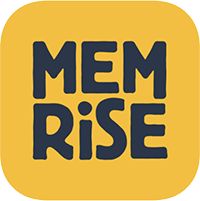
Memrise
- Available: Android, iOS.
- Price: Free, with a premium version available.
- Point of difference: A handy resource for beginners.
Like Duolingo, Memrise has a premium option (Memrise Pro, $21.99 a month) available but gives away most of its content for free. Unlike Duolingo, Memrise doesn’t run ads, and its offering reflects this lack of revenue. Many people have found Memrise to be a helpful study aid, but you shouldn’t expect anything too fancy.
There’s a library of over 30,000 videos of native speakers talking in 23 languages, as well as “Membot”, an “AI language partner built using GPT-3 technology”.
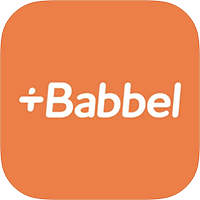
Babbel
- Available: Android, iOS.
- Price: $9.99–12.99 a month.
- Main selling point: Structured, comprehensive learning.
Babbel requires a financial commitment early on. After a week-long trial, you need to decide whether you like the app enough to subscribe. The shorter the period you sign up for, the higher the monthly fee.
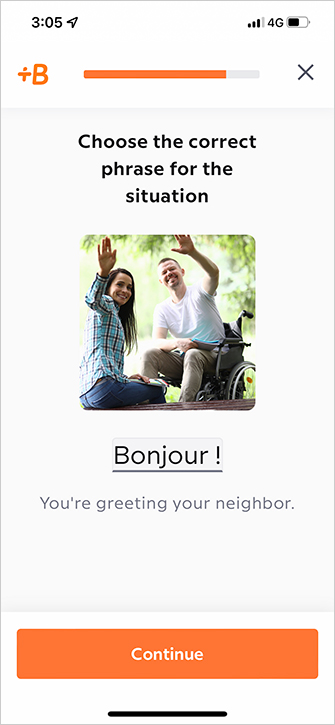
While on the free trial, you can only do one elementary lesson. The French one we tried included how to pronounce, spell and conversationally deploy “Bonjour”, “Ça va?”, and “Au revoir”.
But many apps keep their best content and features behind a paywall, so Babbel can’t be judged too harshly for charging users early on. The question is whether subscribers are getting value for money.
Babbel is a German company that focuses on European languages. If you’re self-motivated enough to use a language learning app that has minimal gamification and that boasts plenty of old-school grammar lessons and pronunciation exercises, you may find Babbel worth investing in.
It’s remarkably popular given its paywall and the relatively small number of languages it offers (14), with over 10 million people reportedly having subscribed to it since it launched.
Babbel may be for you if you’re serious enough about your language studies to want access to content for intermediate and advanced learners. But if you’re a beginner, similar exercises are readily available elsewhere for free.

Lingvist
- Available: Android, iOS.
- Price: $14.49 a month.
- Main selling point: No grammar lessons.
Native speakers of a language typically have a vocabulary of 15,000–30,000 words. However, getting by in a language is possible if you can memorise approximately 800–1000 of its most commonly used words.
Lingvist has taken this concept and run with it. It seeks to familiarise users with the most important words (“man”, “woman”, “be”, “have”, etc) in a language by having them guess what word fits in a sentence. If you don’t supply the correct answer, it flashes up for a few seconds and you get another chance to use it appropriately.
The app is aimed at English speakers aspiring to learn Brazilian Portuguese, Dutch, Estonian, French, German, Italian, Japanese, Korean, Russian or Spanish (Latin American or European). It has a no-frills design, but it gets the job done.
An introductory test determines how many words you already know (771 out of the 5091 French words the app teaches, in our case) and then directs you to modules with titles such as “A weekend in Paris”, “Food”, and “The family”. To access those modules, you must hand over your credit card details, though there is a 14-day free trial.
A pro and a con of Lingvist is that it doesn’t teach grammar, which is often the most frustrating aspect of learning a language. If you’re unable or unwilling to devote lots of time and effort to learning to speak a language correctly but want to make yourself understood when looking for a toilet or buying a bus ticket, Lingvist might be the app for you.
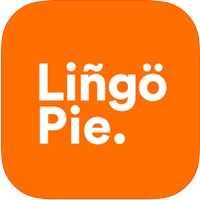
Lingopie
- Available: Android, iOS.
- Price: $17.99 a month.
- Main selling point: Pop culture-based learning.
Children and even some adults can sometimes learn a new language simply by consuming popular culture. So, it’s unsurprising some apps attempt to make achieving fluency relatively painless by allowing users to watch movies and TV series and listen to songs.
Like many of its competitors, Lingopie only caters to those wanting to learn one of a handful of widely spoken languages – English, French, German, Italian, Japanese, Korean, Portuguese, Russian and Spanish, in this case.
The other downside of Lingopie is that users are likely to experience sensory overload from watching what is unfolding on the screen while simultaneously attempting to read the comprehensive English and foreign language subtitles. If our experience is anything to go by, most users will have to keep pausing the show and scrutinising the subtitles.
This soon becomes as laborious as conventional language learning exercises. And given they have ready access to subtitled foreign language films and TV programs via SBS and streaming services, Australians might find it hard to justify the cost.
Specialist language apps
Want to speak Swahili, communicate better with a deaf colleague, or play a part in keeping First Nations languages alive?
Apps for obscure languages
For practical and commercial reasons, language learning apps focus on languages many people want to learn. But some do offer lesser-spoken languages.
For example, Pimsleur ($20.95 a month) offers 51 languages, including Albanian, Armenian, Haitian Creole, Icelandic, Lithuanian, Romanian and Vietnamese. Likewise, Mango Languages ($7.99 a month) offers everything from Cherokee to Scottish Gaelic.
Apps for First Nations languages
Australia is home to a wealth of First Nations cultures and languages. If you’re interested in learning one of these languages, there are plenty of apps to choose from.
There isn’t space to list them all here, but you might want to start by checking out FirstVoicesKeyboards (free, covers “over 100” First Nations languages from Australia, Canada, New Zealand and the US) or NSW AECG Languages App (free, covers six languages spoken in New South Wales – Bundjalung, Gumbaynggirr, Gamilaraay, Murrawarri, Paakantji and Wiradjuri).
Apps for sign language
Sign languages, like conventional ones, differ from nation to nation and sometimes even region to region. Some mainstream language learning apps offer sign language lessons, but they’re unlikely to be in Auslan, the sign language used by Australians.
Auslan language learning apps include Auslan Tutor 2 (free), Auslan Games 2 (one-time payment of $2.99) and Baby Sign andLearn (free), among others.

